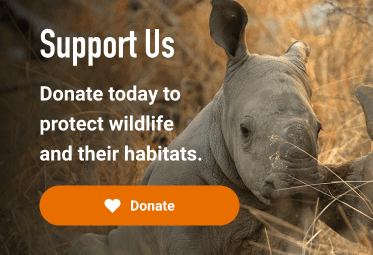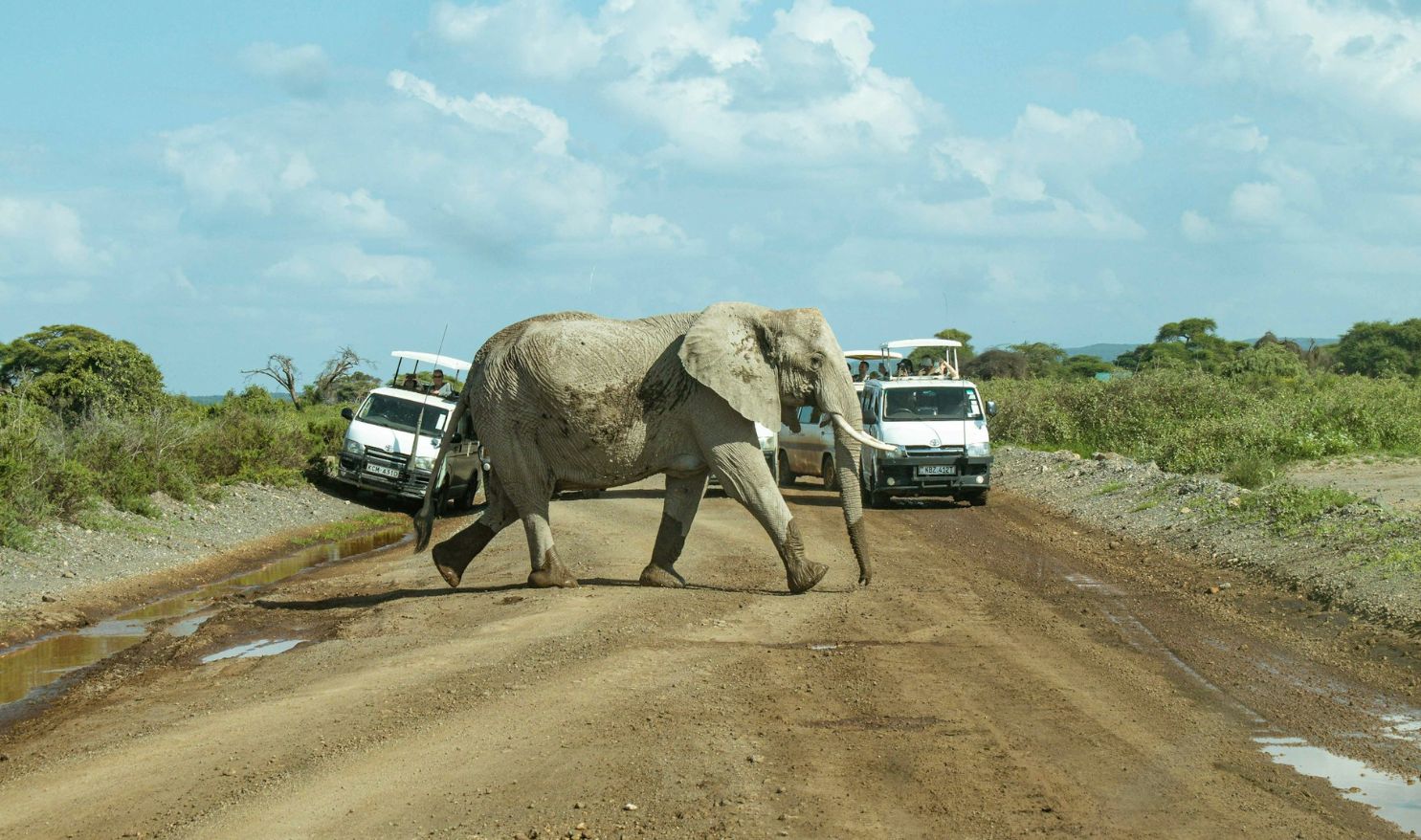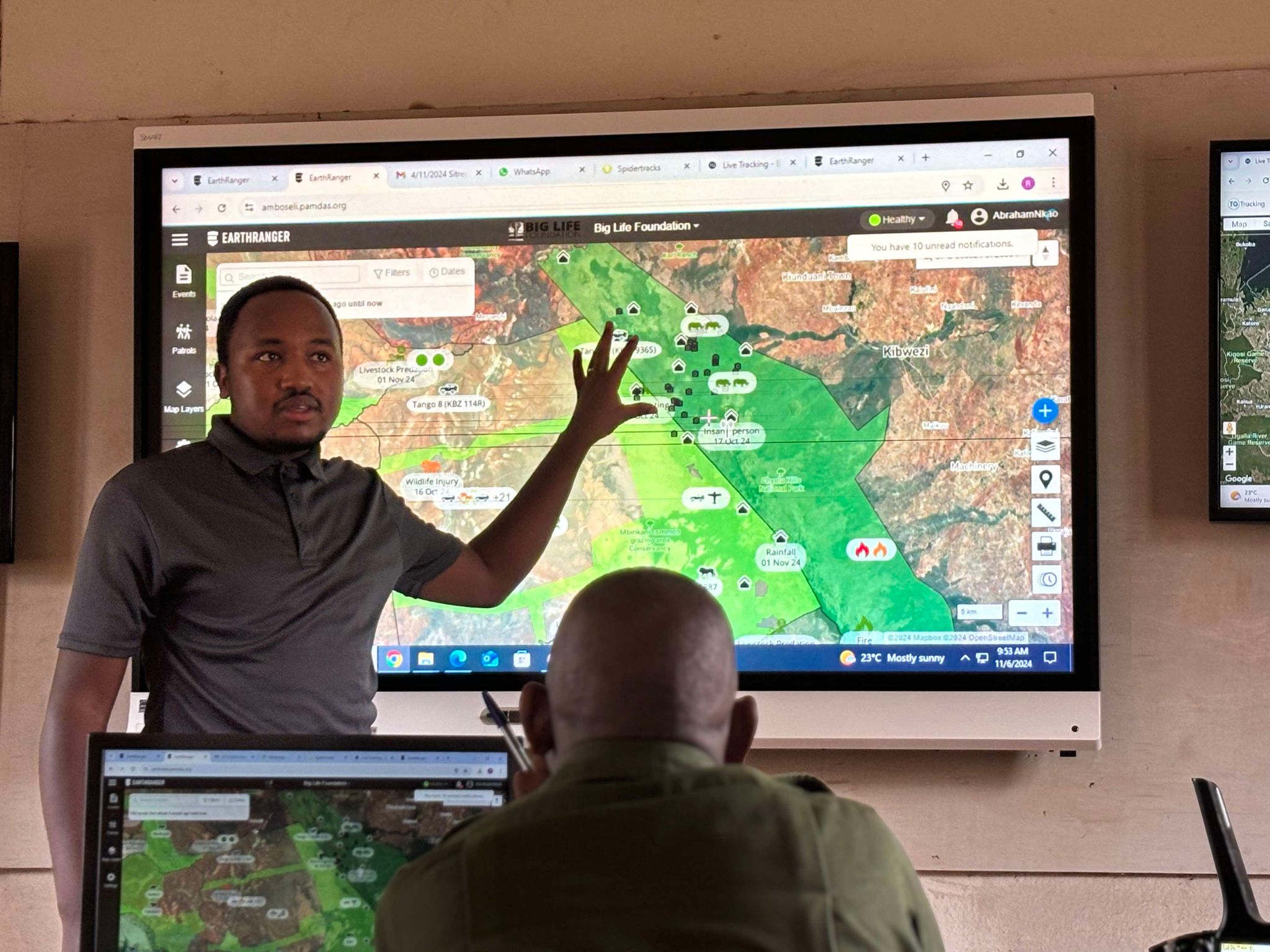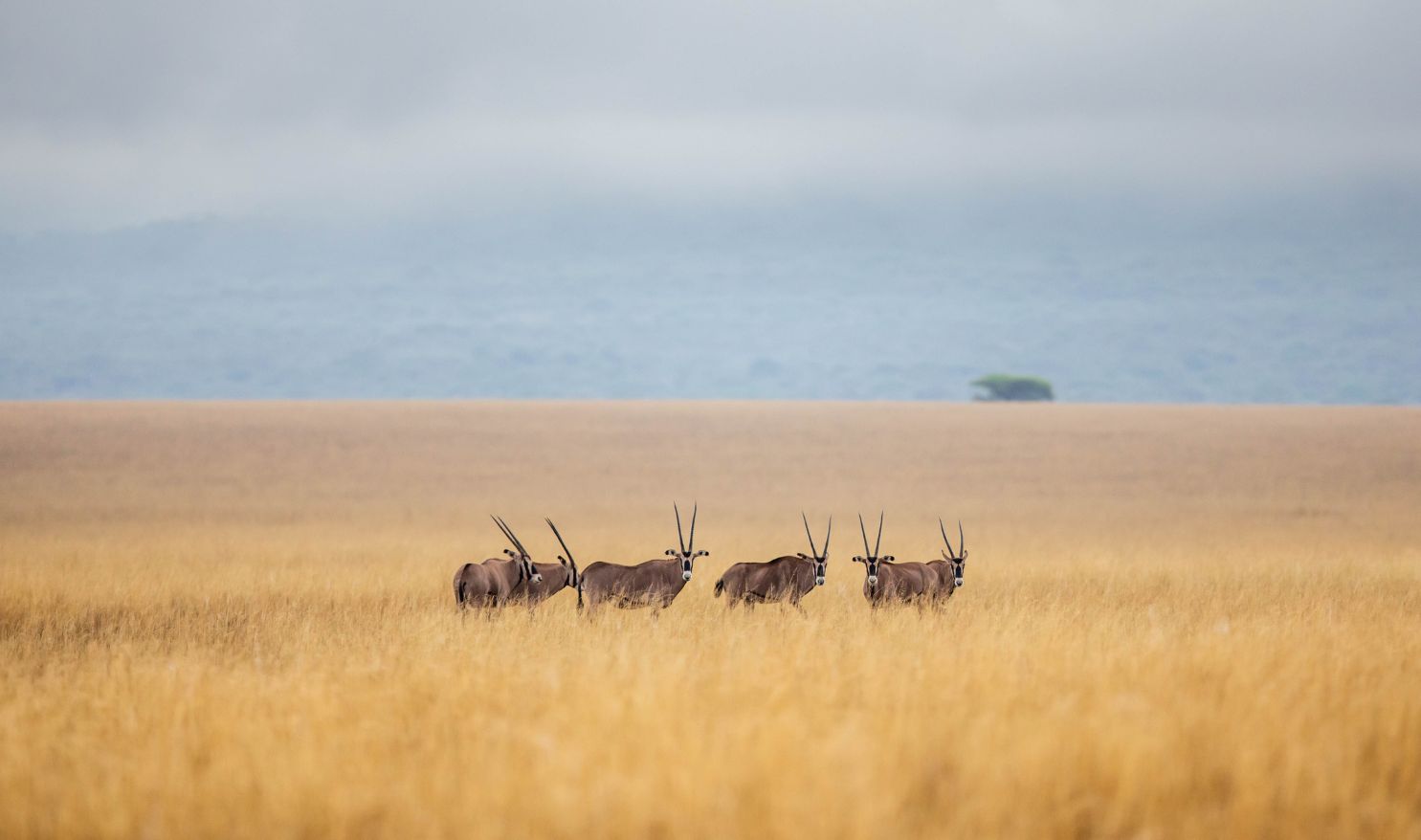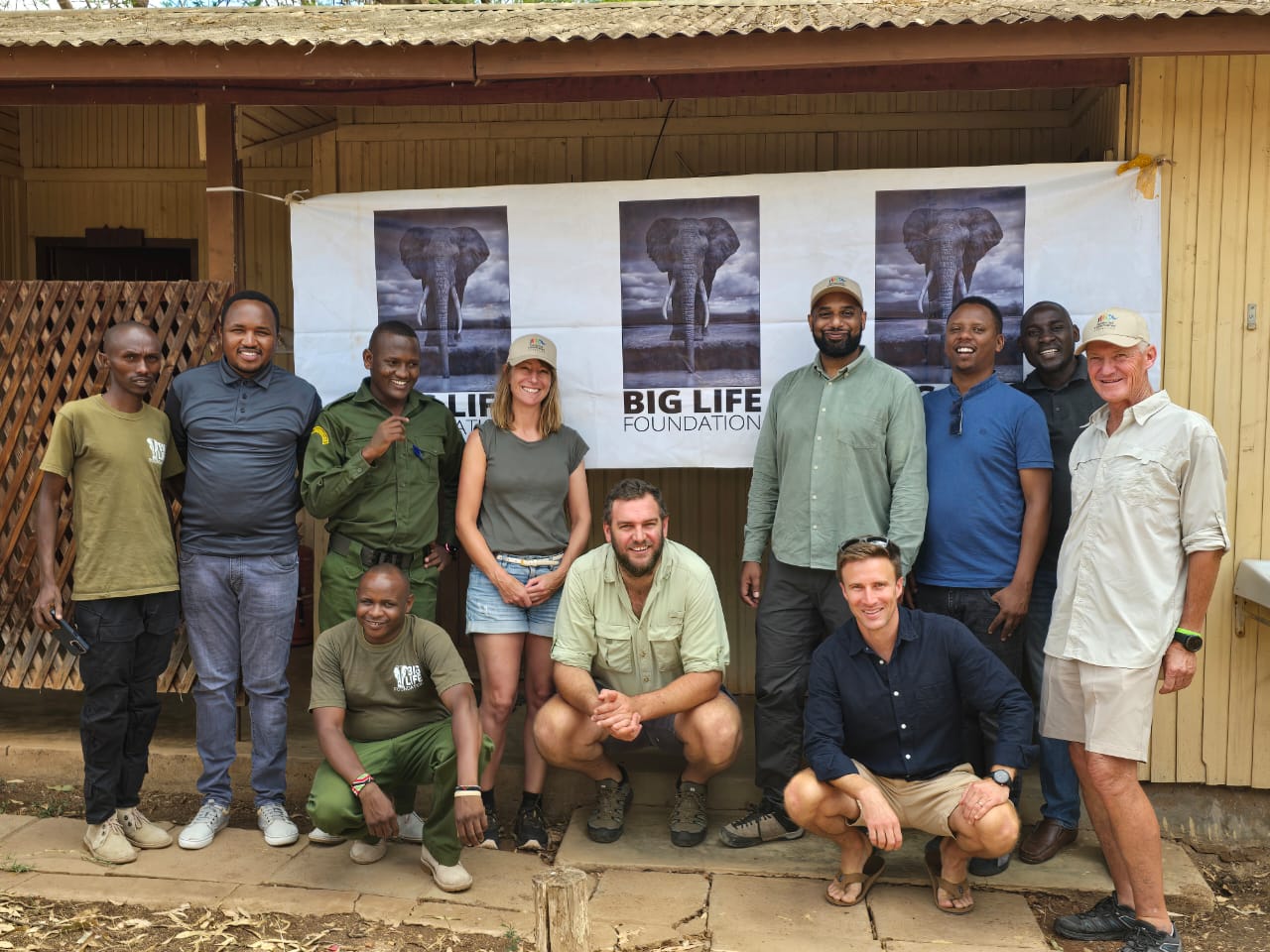Coupling LoRaWAN with community collaboration for coexistence and wildlife protection in Amboseli
Partners: Big Life Foundation, Cisco
Key Species: Eastern black rhino, African lion, African elephant, giraffe, cheetah, fringe-eared oryx
Deployment: 2025
Big Life has partnered with Maasai communities for over 30 years, building a locally rooted conservation model in the Greater Amboseli Ecosystem. More than 390 Maasai rangers patrol this vast landscape, defending against poaching, habitat loss and rising human-wildlife conflict. Their work safeguards an iconic site known for Mount Kilimanjaro’s backdrop, Eastern black rhinos, lions and over 2,000 African savanna elephants.
Spanning 2 million acres from southern Kenya to northern Tanzania, Big Life protects the ecosystem with 32 outposts, 11 mobile units and a skilled tracker dog team. Daily patrols deter poachers, guide elephants from farms, resolve predator conflicts and support critical veterinary care. But the landscape is changing. Much of the land has shifted from community to private ownership, fuelling unplanned development, fragmentation, and conflict. Big Life is working with landowners to reconnect habitats and foster coexistence between people and wildlife.
Harnessing technology
CCF and Cisco are proud to support Big Life’s vision with a combined donation of gateways to expand a LoRaWAN network across the ecosystem, and financial support to strengthen the tower infrastructure that supports this. The network will enable a digitally interconnected ecosystem, supporting animal tracking, environmental monitoring and operational efficiency. By providing timely data, LoRa technology will help Big Life shape conservation strategies, improve governance and enhance the resilience of Amboseli's landscapes.Tracking lions, livestock and landscapes
Big Life plans to use the LoRa network to support animal tracking of conflict-prone lions and community livestock, ensuring faster, more effective responses to protect both local livelihoods and wildlife. Environmental sensors are intended to track rainfall, temperature and other variables to improve rangeland management, helping communities adapt to changing conditions while reducing conflict pressures.
A new era of elephant tracking
New man-made boreholes and the spread of agriculture are attracting elephants into high-risk areas outside their current range, heightening elephant-human conflicts. There is an opportunity to monitor 100 km of electric crop-protection fencing with LoRa sensors, enabling Big Life to track fence-breaching elephants, providing vital insights into their movements and the root causes behind these behaviours.
Optimising operations
Big Life is working to integrate data from LoRa sensors on vehicles and aircraft into their Telematics software (a cost-tracking tool) to monitor the significant fuel expenses associated with patrols and conservation interventions. This integration will provide valuable insights into current spending, help assess the cost of each operation for smarter vehicle patrols and improve budget forecasting accuracy. Real-time monitoring of ranger units will also provide the ability to coordinate rapid responses effectively, be it a reaction to a poaching incident or a community emergency.
Protecting the endangered eastern black rhino
In the remote Chyulu Hills, Big Life and the Kenya Wildlife Service (KWS) protect a remnant population of critically endangered Eastern black rhinos, seen only 32 times in five years. Local Big Life rangers work in partnership with their KWS counterparts, using camera traps for monitoring, to safeguard this rare, genetically independent population at an annual cost of $455,465. Long-term, LoRa tags could be deployed to monitor rhino movements. The Chyulu Hills are also approved for rhino reintroduction, and LoRa technology will play a crucial role in monitoring translocated animals in this rugged terrain.

